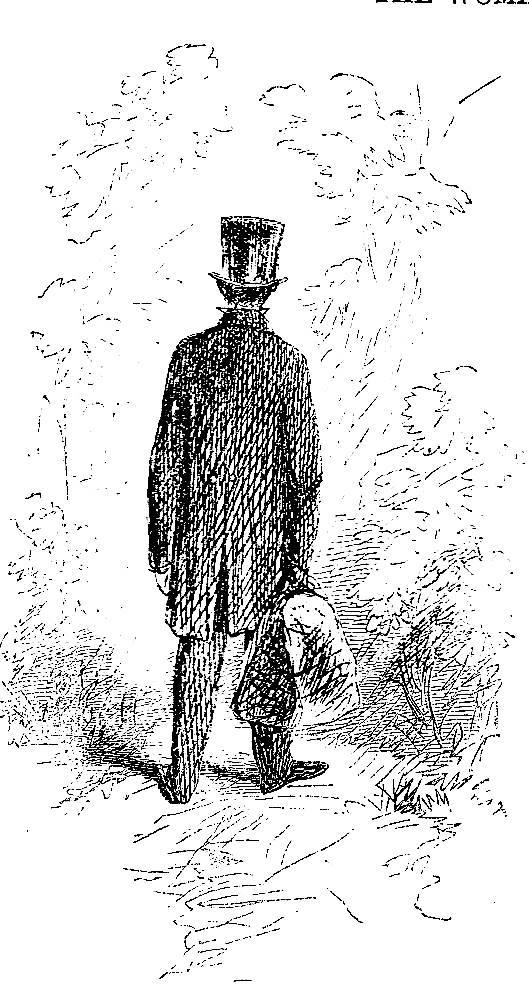Man carrying a carpet bag and wearing a top-hat.
John McLenan
16 June 1860
9.8 cm high by 5.7 cm wide (3 ¾ by 2 ¼ inchess), vignetted.
Uncaptioned headnote vignette for the thirtieth weekly number of Collins's The Woman in White: A Novel (16 June 1860), 380; p. 189 in the 1861 volume.
[Click on the image to enlarge it.]
McLenan notes in advance of the instalment that Walter had realizes he has been spied upon at Kyrle's office. One of those same spies now appears at Blackwater Park: this can be no mere coincidence. He realizes that this agent of Fosco and Glyde has anticipated his arrival in Hampshire.
Scanned image and text by Philip V. Allingham.
